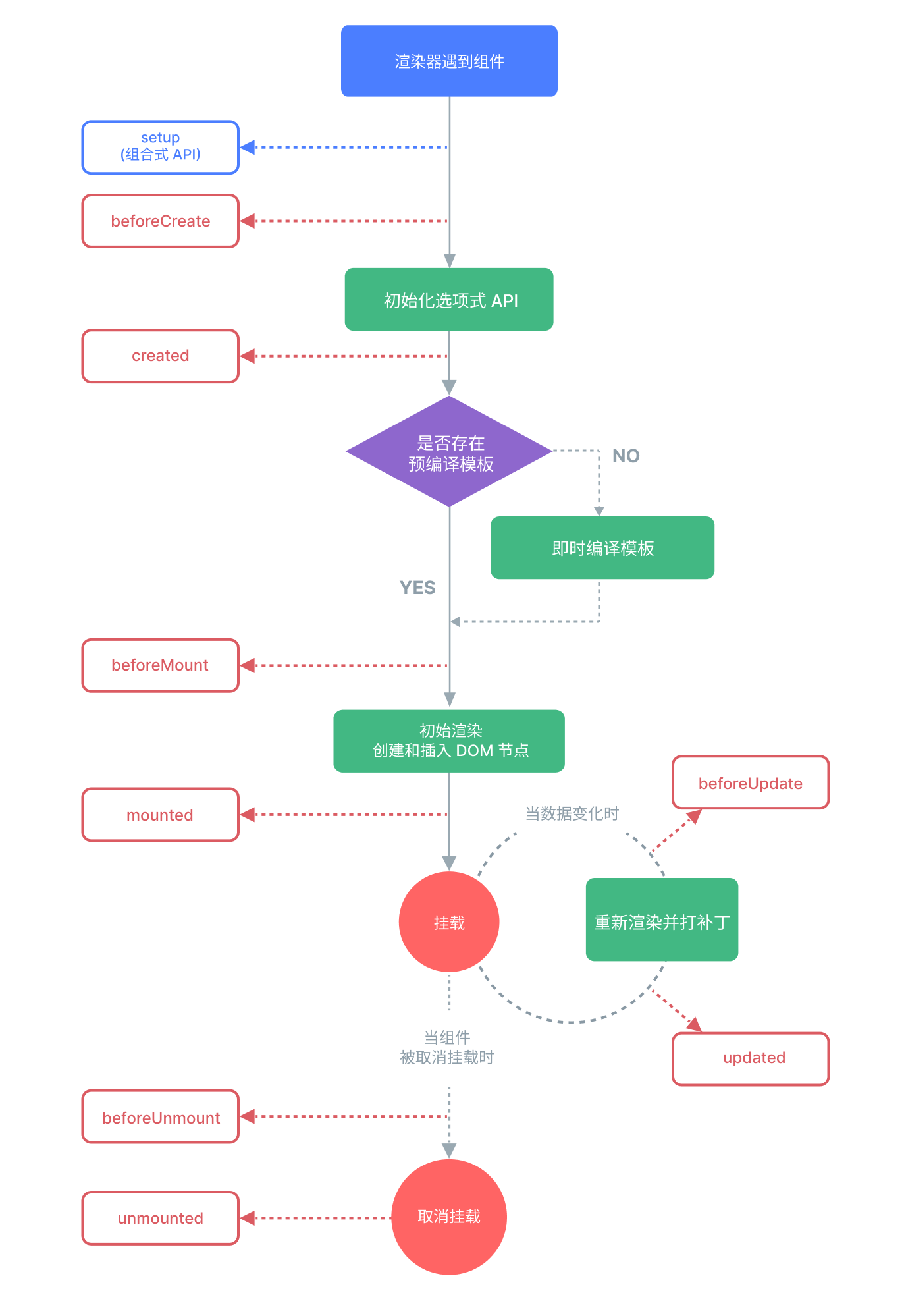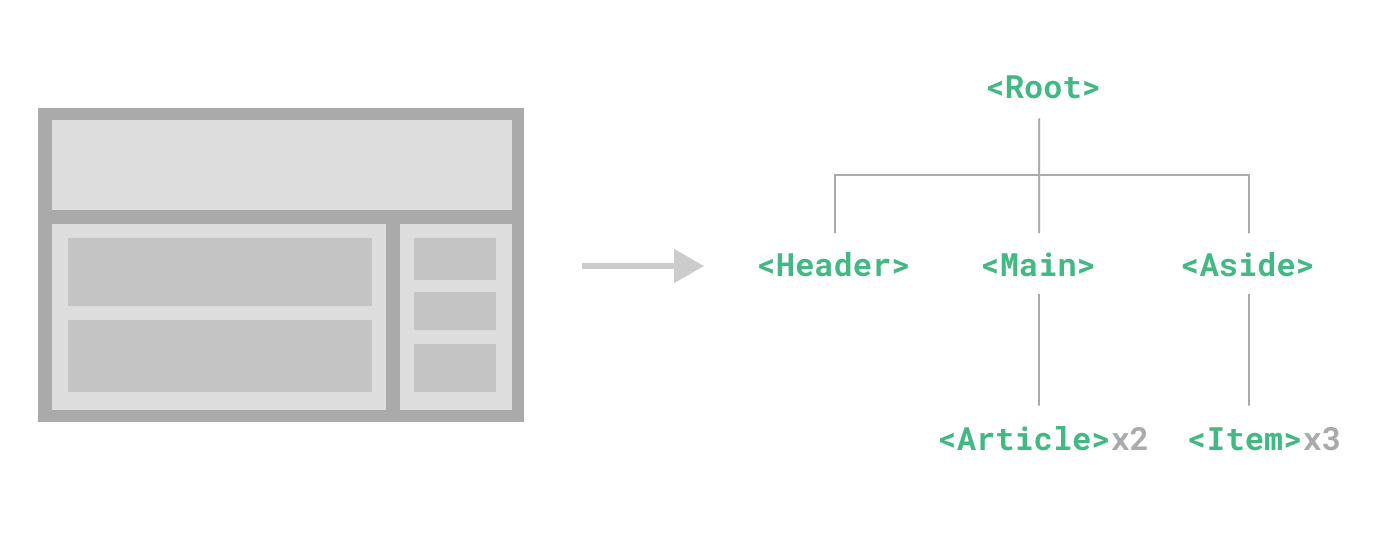Everyone likes Vue
本文最后更新于:2025年6月26日 下午
Everyone likes Vue
Some docs you may need:
- vue official website
- vuetify — a material design UI framework for vue
- nativescript-vue — build your mobile app with vue
- bootstrap-vue — vue with popular bootstrap
- pinia — the next generation of Vue data store management
Some Alias
v-on: —> @
This for event trigger
for how to use modifiers, please see docs
v-bind: —> :
This for data binding — dynamically responsive to model
One picture explains everything:
usually these two can handle most situations, except…
v-if Vs. v-show
One sentence to conclude: v-if decides whether to render the node(if the node is loaded), v-show decides whether to display the node(if the style append ‘display: none;’)
v-for — the list rendering
Note: you shouldn’t use both v-for and v-if in one scenario, cause their priorities are obscure
Nothing to specially mention here:
<li v-for="(item, index) in items" :key="item.id">
{{ index }} - {{ item.info }}
</li>and for object:
<li v-for="(value, key, index) in myObjects">
{{ index }}. {{ key }}: {{ value }}
</li>or only value:
<span v-for="n in 10">{{ n }}</span>you can use
of as substitution for in; and you can also use destructuring assignment here.
Note: recommend to add :key whenever you use v-for
v-mode Vs. v-bind
When should you use v-mode? Remember, v-mode is born for handling form inputs. So when you encounter something like <input />, it better remind you of v-mode.
Differently, v-mode is used for double-binding, which means not only can you change the data value from javascript, the user also has ability to change data just by changing input text.
Conclusion: v-mode for input text that you can see from the browser.
you may be interested in modifiers it provides
You should use computed
There is one main reason for you to better use ‘computed’: you’re bothered about how to organize your binding-data logic
Once you want to compute a expression with complex logic, you should think about using computed. Think about following codes:
<script>
export default {
data() {
return {
author: {
name: 'John Doe',
books: [
'Vue 2 - Advanced Guide',
'Vue 3 - Basic Guide',
'Vue 4 - The Mystery'
]
}
}
}
}
</script>
<template>
<span>{{ author.books.length > 0 ? 'Yes' : 'No' }}</span>
</template>why not just try out
computed:<script>
export default {
data() {
return {
author: {
name: 'John Doe',
books: [
'Vue 2 - Advanced Guide',
'Vue 3 - Basic Guide',
'Vue 4 - The Mystery'
]
}
}
},
computed: {
publishedBooksMessage() {
return this.author.books.length > 0 ? 'Yes' : 'No'
}
}
}
</script>
<template>
<span>{{ publishedBooksMessage }}</span>
</template>easy piece, right?
There even has more good feature: ‘computed’ only refreshes when the computation result is different from before.
Note: Do not try to use side effects in computed, instead, use watch
Watch the update
Although computed can automatically execute when expression value is updated, it’s not recommended to use that feature to execute some other functions(side effects) automatically.
Better use watch:
<script>
export default {
watch: {
// whenever the value of question is changed, the function bellow will execute.
question(newQuestion, oldQuestion) {
if (newQuestion.includes('?')) {
this.getAnswer()
}
}
},
}
</script>deep watch
Sometimes we want watch a value in Objects, then we need ‘deep watch’:
<script>
export default {
watch: {
someObject: {
handler(newValue, oldValue) {
// 注意:在嵌套的变更中,
// 只要没有替换对象本身,
// 那么这里的 `newValue` 和 `oldValue` 相同
},
deep: true
}
}
}
</script>Life Tree of Vue

Let’s meet Vue Component

If you want to import a child component, then you must register it in components:
<script>
import ButtonCounter from './ButtonCounter.vue'
export default {
components: {
ButtonCounter
}
}
</script>
<template>
<h1>Here is a child component!</h1>
<ButtonCounter />
</template>data flow direction
prop deliver(props): Parent —> Child
<!-- Child.vue --> <script> export default { props: ['title'] } </script> <template> <h4>{{ title }}</h4> </template><!-- Parent.vue --> <BlogPost :title="myTitle" />then parent component changes the value of myTitle, it will make child component update the value of title.
event watch($emit) : Child —> Parent
<!-- Child.vue --> <template> <div class="blog-post"> <h4>{{ title }}</h4> <button @click="$emit('enlarge-text')">Enlarge text</button> </div> </template> <!-- or --> <script> export default { emits: ['enlarge-text'] } </script><!-- Parent.vue --> <BlogPost ... @enlarge-text="postFontSize += 0.1" />By using
emit, child component make the click event deliver to parent component so that child component is accessible to parents’ function.
Make your own directive
<script>
const focus = {
mounted: (el) => el.focus()
}
export default {
directives: {
// 在模板中启用 v-focus
focus
}
}
</script>
<template>
<input v-focus />
</template>You can see mounted here, this hook is provided by Vue, you can find more hooks here
本博客所有文章除特别声明外,均采用 CC BY-SA 4.0 协议 ,转载请注明出处!